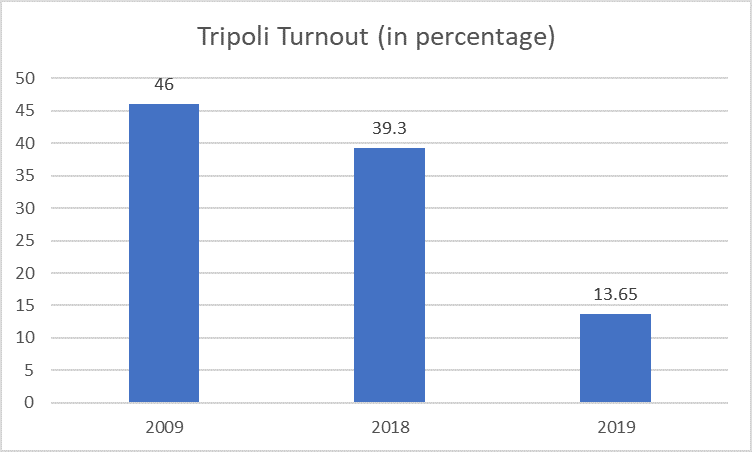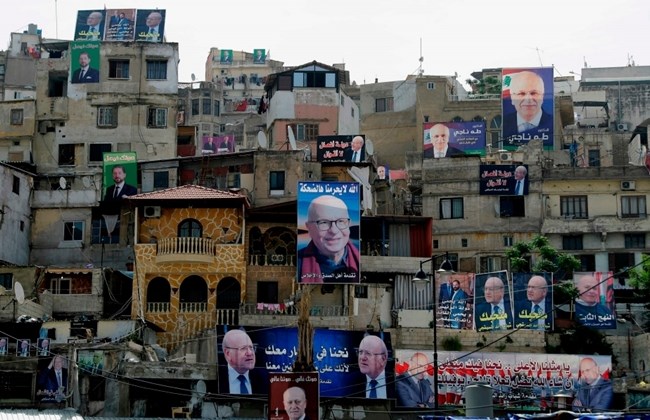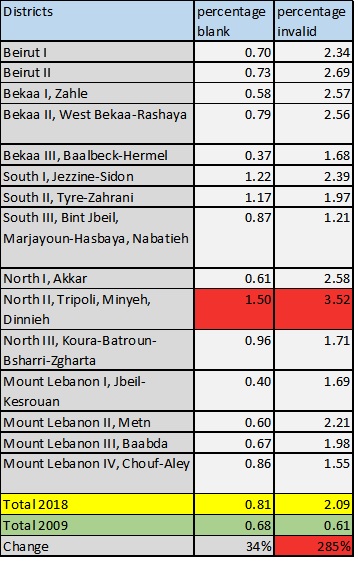The election was uneventful, with expected results. Yet a lot of interesting insight could have been gleamed by studying the raw data. Unfortunately, the results (both the final tabulation and the raw data) has been, once more, published by the Ministry of Interior in a PDF format. So, it will take efforts to convert, reorganizing and then cross link the data to start getting trend lines and inference(similarly to what was done in the DLP).
First, the law. As mentioned in my previous article on the by-elections, was majoritarian, as it is not feasible to run a proportional election for one seat. The electoral law stipulates that any by-elections with less than three seats in one district shall be held under a majoritarian system in small (Qaza) district.

Second, turnout. As expected was significantly lower. However, the surprise was how much lower it was. Just before the elections, I wrote expecting a 50% drop in turnout, based on historic trends. I projected a fall in turnout from around 39% in the 2018 elections to 20%. Shockingly, the final turnout numbers of the Tripoli by election was 13.65%. This is significantly lower, and it indicates deep seated popular resentment and apathy. The political forces in Tripoli should take heed!
There was a surprising increase in invalid ballots, from 3.96% in 2018 to 8% in 2019!!
Third, there was an understandable uptick in white ballots, as people were unsatisfied with the candidates, and with a broad heterogeneous alliance. However, there was a surprising increase in invalid ballots, from 3.96% in 2018 to 8% in the 2019 by-elections!! Indeed, in 2018 Tripoli’s invalid numbers were the highest in Lebanon, reaching 3.96%. This increase was mainly caused by the use, for the first time in the history of Lebanon, of a proportional system, instead of a majoritarian one. However, in 2019 the by-elections were held under a majoritarian system, nevertheless the invalid numbers doubled! I believe that this is caused by the switch from system to system and the lack of awareness and information. This is an issue that needs addressing. I do not think such a continued switching between systems is advisable. It is confusing the population and increasing invalids ballot numbers!
Fourth, in my previous analysis, I also indicated that the large alliance encompassing most of the political parties of the city (Future Movement -FM-, Mikati, General Rifi, …) that supported Dima Jamali (part of the FM), should get at least 20,000 votes. MP Dima Jamali won back her seat, that she lost following a decision by the constitutional council for irregularities, with 19,387. Indeed, FM supported by all the different political forces in Tripoli were able to achieve a pyrrhic victory, while spending the minimum amount of required effort, time, and treasure! Nevertheless, PM Saad Hariri had to spend a significant political capital to forge the alliance that allowed his candidate to win. He reconciled with General Rifi, who spearheaded the opposition against PM Hariri in 2016 municipal elections, and he reaffirmed his partnership with Mikati. Yet, a victory is a victory, and PM Hariri and his FM were once more able to reaffirm their influence in Tripoli and enjoy the support of a sizable part of its citizens, while conserving his parliamentary group of 20 MPs.

On the other hand, out of all the opponents running against FM candidate’s Dima Jamali, none achieved outstanding results. Hezbollah’s allies such as Karameh didn’t field a candidate. Meanwhile, as per their usual modus-operandi, civil societies’ parties splintered and divided their votes, further discouraging their supporters, lowering their turnout, and increasing their apathy. Still, Mr. Yehyah Mawloud, as the front runner for civil society was able to get 3,295 up from a personal score of 909 and a list score of 2,274 in 2018. Mr. Omar Sayyed, another civil society candidate, running for the first time, reached 2,240. What these civil society political players are unable or unwilling to understand is that if they plan to have any significant impact on the Lebanese political arena and build a solid and growing popular support around their movement, they must consider each election as a matter of life and death for the movement as a whole. Elections are not a popularity or an ego contest. Every time they splinter and divide their forces, their popular support further erodes and people revert back to the sectarian traditional parties.

Musbah Ahdab, the former MP, who was a young rising star of March 14, in 2009, was able to assert his small but solid and eager group of supporters, ensuring that in the next elections he should be taken seriously, indicating that he would provide an added value to any coalition he joins. Indeed, while most political forces supporters and voters’ numbers plummeted in the by-election, Mr. Ahdab was able to increase his personal score from 908 votes in 2018 to 2,590 (it is important to note that in 2018 he was part of a list that got a cumulative 3,307. Yet his ability to come close to that number running alone in a by elections, with a much lower turnout rate is a significant result!)
Finally, Mr. Nizar Zakka was a candidate, he is a Lebanese Analysis of Tripoli’s By-election results!American citizen that has been incarcerated in Iran for the past few years. He candidacy was a laudable effort to raise the issue of his imprisonment and push the Lebanese government to take more actions. He received 503 votes. Fortunately, he was released from prison a few months later.
*info-graphic used courtesy of LCPS, a great Lebanese think tank known for its rigorous unbiased research, publications, and beautiful info-graphics!





